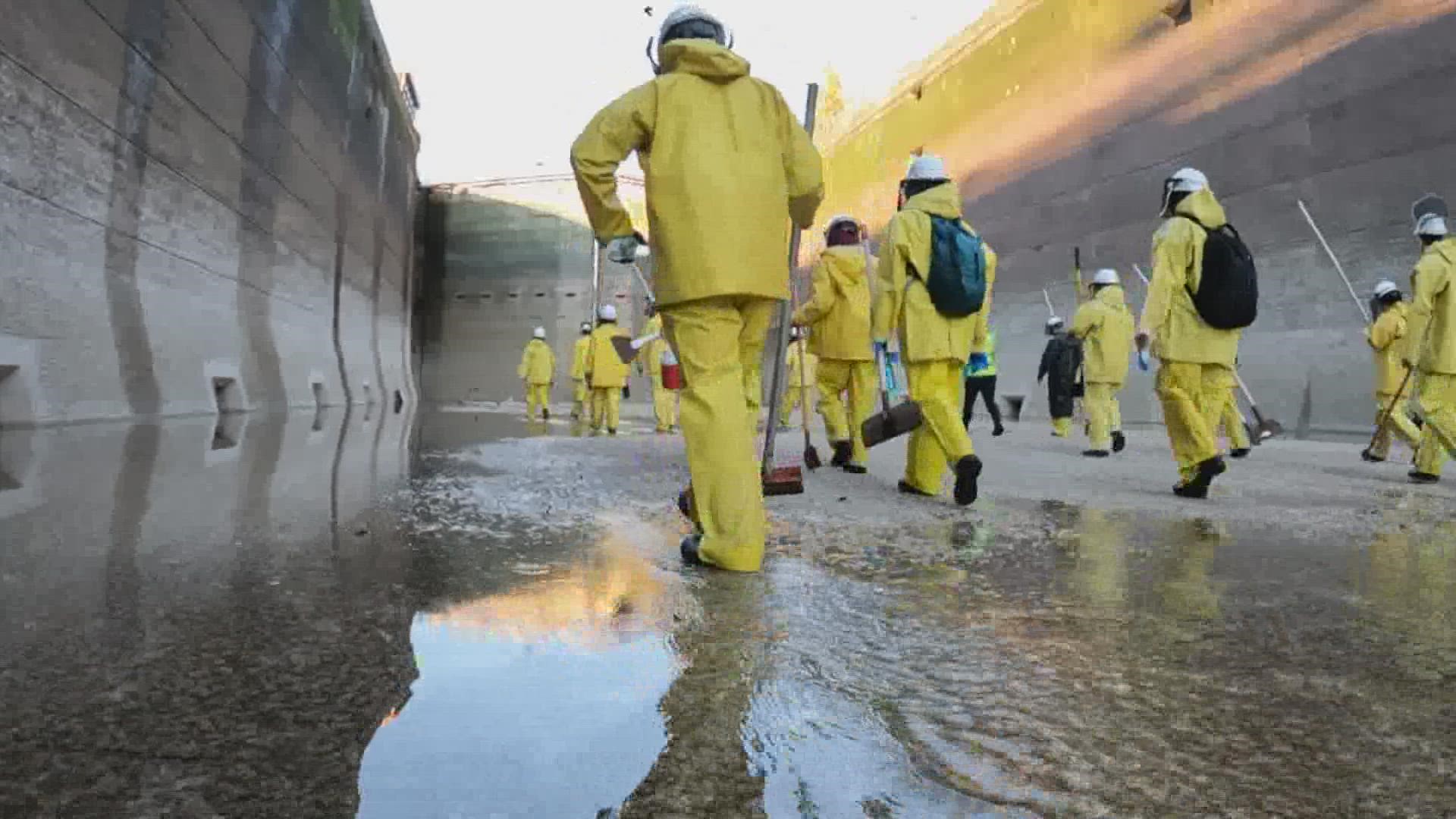SEATTLE — One of Seattle’s not-so-modern marvels was cleaned Friday by the Army Corps of Engineers and some well-equipped volunteers.
The Ballard Locks are 105 years old and remain one of Seattle’s most popular attractions. The locks are a gravity fed system used to raise and lower boats and connects the saltwater Puget Sound to the freshwater Ship Canal that leads to Lake Washington.
Operations Plant Manager Jonathan Hofstra said they are the busiest locks in the nation. There are about 50,000 “lockings” a year between the upper and lower chambers and is operational 24/7.
Officially known as the Hiram M. Chittenden Locks, the Ballard Locks host a fall cleaning that empties the large lock. The annual maintenance and inspection provides a window of opportunity for the Army Corps of Engineers to host a vital cleaning.
Corps employees and volunteers scrape barnacle buildup from two tunnels that run the entire length of the 800-foot chamber.
“It’s a big job but we have an obligation to protect the salmon that pass through the locks, twice,” says Fisheries Biologist Kaitlin Whitlock.
Migrating salmon are channeled through the tunnels that feed the locks and excessive barnacle buildup makes the passage treacherous.
“The current can push the salmon against the wall and get scraped and injured and can even die,” Whitlock said.
Commander Colonel Alexander L. Bullock of the Army Corps of Engineers Seattle District joined the scraping. He said the safe passage of boaters, private and commercial, isn’t something to take for granted.
“I’m really proud of the team that works above the Locks. I’m really proud of the team that works behind the locks in the machine shops. And then my volunteers who are down here scraping barnacles out,” Bullock said.
The safe passage is a point of pride and a vital access point for big business along the canal.
“If we close for any point in time that can affect the industry on the lake and that’s about $1.5 billion dollars of economic impact,” Hofstra said.

